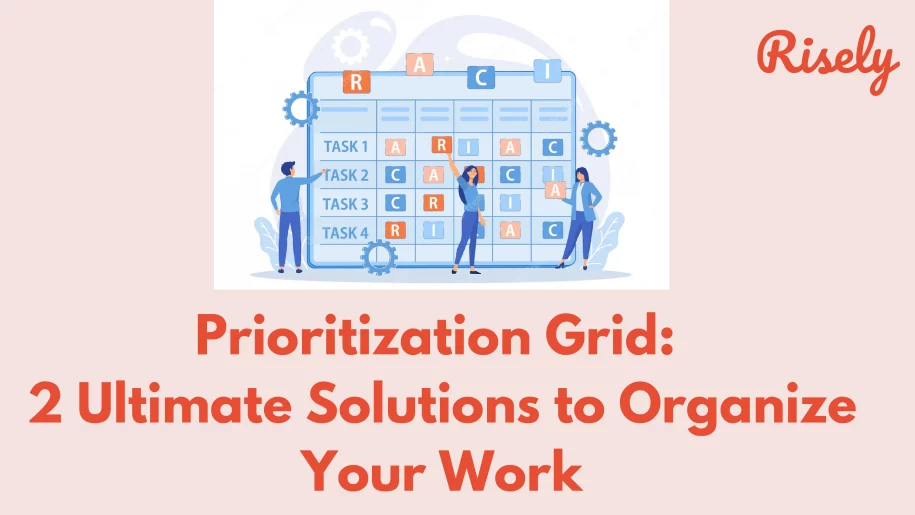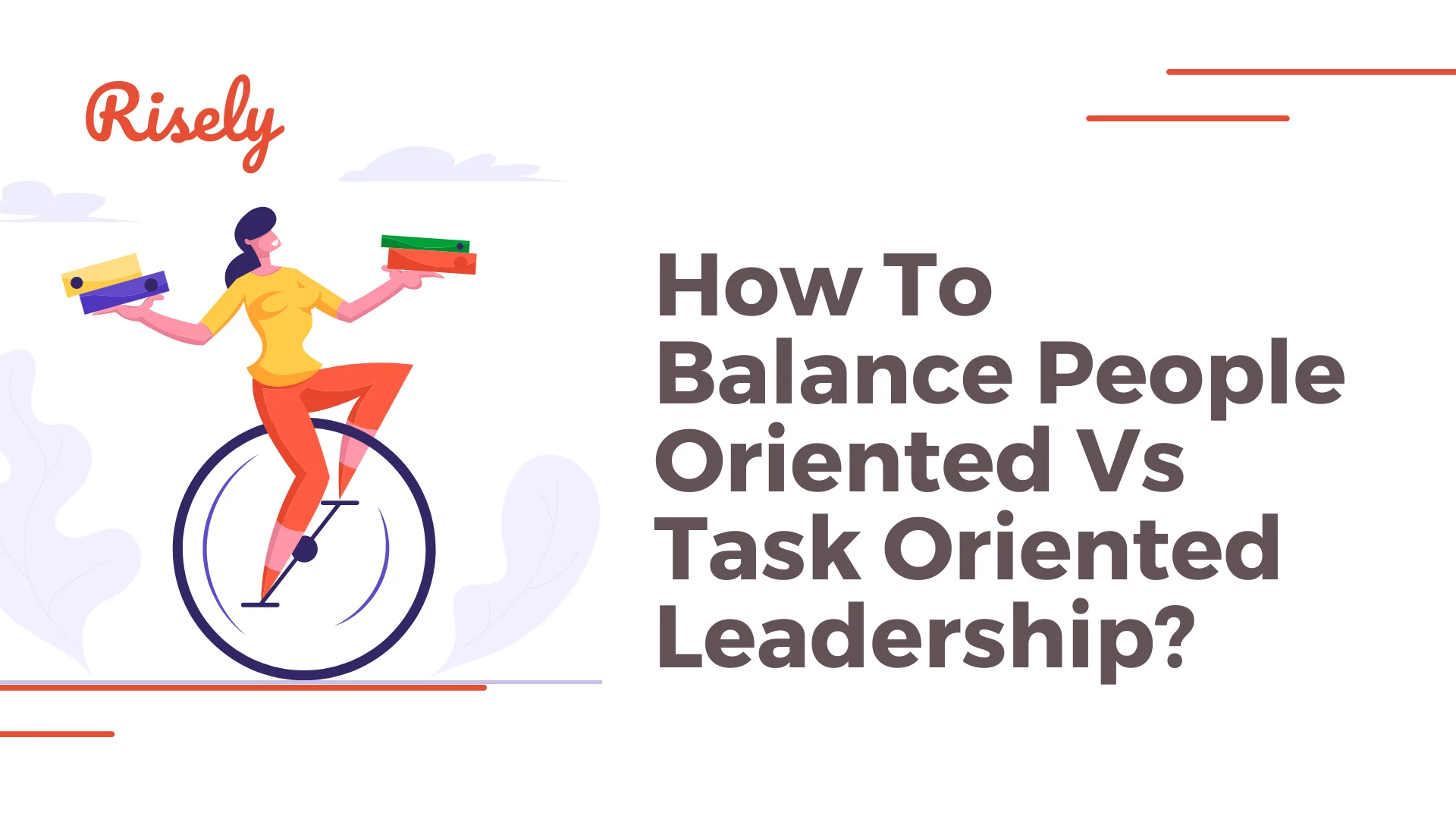Prioritization Grid: 2 Ultimate Solutions to Organize Your Work
Have you ever felt overwhelmed by the amount of work you have to do? Do you find yourself struggling to figure out what tasks to tackle first? Enter the prioritization grid, a powerful tool to help you organize your work and focus on what matters. This blog will explore two ultimate solutions for managing your work – the Prioritization Matrix of Urgent and Important and the Six Sigma Prioritization Matrix. We will discuss their pros and cons and offer tips on using them effectively. By the end of this post, you’ll clearly understand how to use a prioritization grid to streamline your workload and achieve more in less time.What are Prioritization Grids?
A prioritization grid, or a prioritization matrix, prioritizes tasks or projects based on multiple criteria. The grid is typically divided into rows and columns, each representing a task or project and each representing a criterion or factor to be considered in prioritization. For example, a prioritization grid could have criteria such as “impact on goals,” “urgency,” and “effort required” as columns, and each task or project would be evaluated based on how it scores on each criterion. Tasks that score high on all criteria would be given the highest priority, while tasks that score low on all criteria would be given a lower priority. Prioritization grids are helpful because they allow individuals or teams to consider multiple factors when making prioritization decisions. They can also ensure that priorities align with goals and objectives and reduce the risk of wasting time and resources on low-impact tasks.Prioritization Matrix of Urgent and Important
What is the Prioritization Matrix of Urgent and Important?
The prioritization matrix of Urgent and Important, also known as the Eisenhower Matrix, is a tool that helps individuals or teams prioritize tasks based on their urgency and importance. The matrix consists of four quadrants, each representing a different level of urgency and importance:- Quadrant 1: Urgent and Important – Tasks in this quadrant are urgent and important and require immediate attention. These tasks should be given the highest priority and completed first.
- Quadrant 2: Not Urgent but Important – Tasks in this quadrant are important but not urgent. These tasks should be planned and scheduled in advance and given a higher priority than tasks that are not important.
- Quadrant 3: Urgent but Not Important – Tasks in this quadrant are urgent but not important. These tasks should be delegated to someone else or postponed if they do not align with your goals.
- Quadrant 4: Not Urgent and Not Important – Tasks in this quadrant are neither urgent nor important. These tasks should be eliminated or minimized to avoid wasting time and resources.
Pros and Cons of the Prioritization Grid of Urgent and Important
Pros:- Clarity: The matrix provides a clear and simple framework for prioritizing tasks based on their urgency and importance.
- Focus: By prioritizing urgent and important tasks, the matrix helps individuals or teams focus on tasks that have the greatest impact on achieving their goals.
- Time Management: The matrix helps individuals or teams manage their time more effectively by prioritizing tasks based on their level of urgency and importance.
- Collaboration: The matrix can be used by teams to collaborate and prioritize tasks based on shared goals and objectives.
- Subjectivity: The matrix relies on subjective judgment to evaluate the urgency and importance of tasks, which can lead to different interpretations among individuals or teams.
- Oversimplification: The matrix may oversimplify complex tasks or projects that require multiple criteria to evaluate their importance and urgency.
- Time-Consuming: The matrix can be time-consuming, especially if there are many tasks or projects to evaluate.
- Lack of Flexibility: The matrix may not be flexible enough to accommodate changes in priorities or unexpected tasks or projects.
Six Sigma Prioritization Matrix
What is the Six Sigma Prioritization Matrix?
The Six Sigma Prioritization Matrix, or the Quality Function Deployment (QFD) Matrix, is used in Six Sigma methodologies to prioritize improvement initiatives based on their impact on customer satisfaction and business goals. The matrix is typically divided into two main sections: customer requirements and business goals. Customer requirements are usually listed in the first column based on customer needs and expectations for the product or service. Business goals are typically listed in the first row, including cost reduction, quality improvement, and increased revenue. Each cell in the matrix represents a specific combination of customer requirements and business goals. It is assigned a priority rating based on its impact on customer satisfaction and business goals. The priority rating is typically determined using a scoring system that considers the relative importance of each customer requirement and business goal. Once the matrix is completed, improvement initiatives are prioritized based on their priority rating. The highest-priority initiatives typically have the most significant impact on customer satisfaction and business goals. The Six Sigma Prioritization Matrix is a powerful tool for prioritizing improvement initiatives and aligning them with customer needs and business goals. It can help organizations make data-driven decisions and focus their resources on initiatives that will impact customer satisfaction and business success.Pros and Cons of the Six Sigma Prioritization Grid
Pros:- Customer-Centric: The matrix is designed to prioritize improvement initiatives based on customer needs and expectations, ensuring that resources focus on initiatives that will impact customer satisfaction.
- Data-Driven: The matrix is based on data and metrics, making it a more objective and accurate tool for prioritization.
- Strategic Alignment: The matrix helps align improvement initiatives with business goals and objectives, ensuring that resources are focused on initiatives that will impact the organization’s success.
- Collaboration: The matrix can be used by cross-functional teams to collaborate on improvement initiatives and ensure all stakeholders are aligned on priorities.
- Complexity: The matrix can be complex to develop and use, requiring significant effort and resources to gather data and evaluate customer requirements and business goals.
- Time-Consuming: The matrix can be time-consuming to develop and use, especially if there are many customer requirements and business goals to evaluate.
- Subjectivity: The matrix can be subject to biases and subjective judgments, particularly in the scoring system used to determine priority ratings.
- Lack of Flexibility: The matrix may not be flexible enough to accommodate changes in customer requirements or business goals, requiring a significant effort to update and maintain.
How to Use a Prioritization Grid?
Given below are some tips that would help you make the best use of a prioritization grid.- Clarify the purpose: Define the specific purpose of the matrix and make sure it aligns with your overall goals and objectives.
- Gather relevant data: Collect all the information needed to populate the matrix accurately.
- Prioritize regularly: Prioritize your tasks, goals, or improvement initiatives regularly using the matrix to ensure you are making progress towards your objectives.
- Use objective criteria: Use objective criteria and scoring systems to evaluate prioritized items.
- Involve all stakeholders: Involve all relevant stakeholders in the prioritization process to ensure everyone’s perspective is considered.
- Evaluate and refine: Evaluate the effectiveness of the matrix periodically and make adjustments as needed to improve its accuracy and usefulness.
- Avoid overcomplicating: Keep the matrix simple and easy to understand to avoid confusion and over-complication.
- Be flexible: Be willing to adjust and adapt the matrix to changing circumstances to ensure it remains relevant and effective.
- Focus on what matters: Focus on prioritizing tasks, goals, or improvement initiatives that are most important and have the greatest impact on your success.
- Take action: Use the prioritization matrix to guide your decision-making and take action on the most important items first.
Conclusion
In conclusion, prioritization grids are an effective way to organize your work and maximize productivity. Whether you choose the Prioritization Matrix of Urgent and Important or the Six Sigma Prioritization Matrix, it is important to understand the pros and cons of each method and consider which one aligns with your specific needs. Once you have chosen a prioritization grid, use our step-by-step guide to implement it effectively. Remember, the key to success is consistency and regular review.Take the free prioritization assessment for managers to identify skill gaps.
Learn the secrets of effective prioritization at work to ensure that your team is never left behind.
Frequently Asked Questions
What is a prioritizing grid?
A prioritizing grid is a tool used to organize tasks based on their importance and urgency. It typically consists of a grid with four quadrants labeled according to urgency and importance. This visual aid helps to prioritize tasks better and decide how to allocate time and resources. Using a prioritizing grid can increase productivity, reduce stress, and improve overall work efficiency by ensuring that important tasks are given the appropriate attention. In contrast, less important tasks are appropriately de-prioritized.
How to do a prioritization grid?
To create a prioritization grid:
– Start by listing all the tasks and projects you need to complete.
– Assign each task a value based on its importance and urgency.
– Plot each task on a grid with importance on one axis and urgency on the other.
– Focus on the tasks in the top-right quadrant of the grid which are important and urgent. This will help you prioritize your workload and ensure you spend your time and energy on tasks with a greater impact.
– Start by listing all the tasks and projects you need to complete.
– Assign each task a value based on its importance and urgency.
– Plot each task on a grid with importance on one axis and urgency on the other.
– Focus on the tasks in the top-right quadrant of the grid which are important and urgent. This will help you prioritize your workload and ensure you spend your time and energy on tasks with a greater impact.
Why are prioritization grids useful?
Prioritization grids are helpful because they help you organize your tasks and determine which ones are most important. They provide a visual representation of the urgency and importance of each task, allowing you to make informed decisions about allocating your time and resources. Using a prioritization grid can improve your productivity and reduce stress by focusing on the most critical tasks first. This tool is beneficial when dealing with competing demands and can help you stay on track to meet your goals.
Other Related Blogs
How To Balance People Oriented Vs Task Oriented Leadership?
How To Balance People Oriented Vs Task Oriented Leadership? Finding the right balance between these two leadership styles is essential for creating a productive work environment and achieving short-term and…
Multitasking is killer, a killer of your effort
Multitasking is killer, a killer of your effort Are you reading this in your early morning round-up of news? Or while driving? Or worse, amid a conversation with someone? It…
5 Frameworks to Master Prioritization Skills
5 Frameworks to Master Prioritization Skills Ever feel like your to-do list has morphed into a never-ending monster, overflowing with tasks and projects all vying for your attention? You’re not…
6 Tips to Manage Multitasking Skills at Work: Examples and Essential Skills
6 Tips to Manage Multitasking Skills at Work: Examples and Essential Skills As a manager, it’s important to be able to juggle multiple tasks simultaneously. Good multitasking skills can help…


